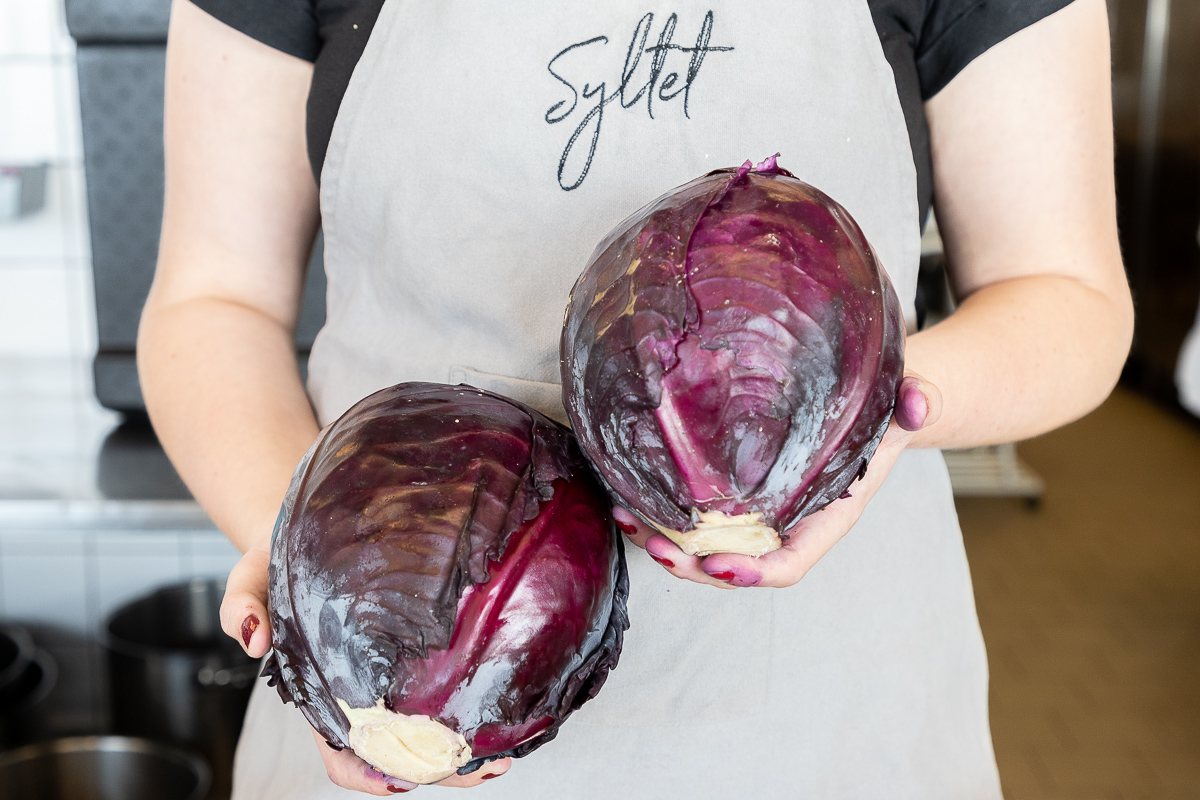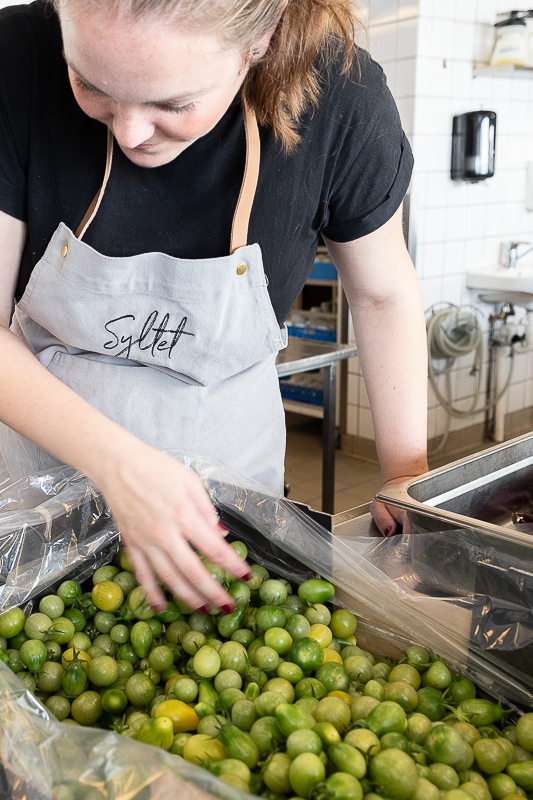Pickling is a cornerstone of traditional Danish food. Thick slices of salted red beets accompany leverpostej (paté), sweetly brined cucumbers balance raw and roasted onions on a classic pølser (hot dog). Just try serving a different brand of pickled red cabbage on Juleaften (Christmas Eve) and see whose grandfather is the first to speak up. There is a rich and long history of pickling in Demark, one that is being thoughtfully reimagined in the New Nordic culinary wave.
It wasn’t so long ago that everyone pickled. The beginning of fall marked a time when households boiled, stewed, salted and packed jars of fruits and vegetables, preserving a taste of summer for the winter months ahead. But taxes on spirits and the high cost of sugar made pickling an expensive task for the average Danish household.
Enter Tørsleffs. In the 1930s, the now iconic Danish food producer Tørsleffs developed a series of products and services that transformed everyday cooking and canning. First were Atamon and Melatin – a liquid preservative and fast acting pectin powder that eliminated the need for alcohol and sugar, substantially reducing the time and cost of homemade preserves. Then came Den Grønne Syltebog, a little green book of canning recipes that is still considered one of Denmark’s best-selling cookbooks. The company’s apex, and the producer of the famous cookbook, was its Husmoder (housewife) Service. The Housewife Service included recipes, cooking courses, and a daily tip line. As women entered the labor force during the post-war period, Tørsleffs was regarded as an indispensible resource to the busy Danish woman.
Surprisingly, little has been done since to modernize pickling in Denmark, even as the wildly popular New Nordic scene continues to reinterpret Danish cuisine. “Danes have bought more or less the same pickled veggies for years and years,” Rie Schimmel, founder of the organic Danish pickling company Syltet, explains. “So many food categories in Denmark have been upgraded. Why not pickling?”
 |
|
 |
 |
Rie started Syltet less than two years ago with the goal of innovating the Danish pickling market. After creating more than a dozen recipes with friend and Michelin-starred restaurant chef, Rasmus Bundgaard, Syltet produced its first five products, including an updated version of the Danish classic syltet rødkål (pickled red cabbage) and an unexpected pairing of carrot with sea buckthorn. “You can pickle – almost – anything!” Rie laughs. “But you won’t know until you try. So I like to experiment and see how it goes.”
Rie’s tips to home pickling:
 Start basic
Start basic
Begin with a traditional Mormors lage. Combine equal parts sugar, water, and vinegar. Keep at boiling temperature.
 Spice it up
Spice it up
Rie prefers to use whole black pepper corns and bay leaves. She recommends experimenting with cinnamon sticks, vanilla pods, mustard seeds, horseradish, thyme, or cloves to add more flavor to the brine.
 Pair tastes
Pair tastes
Think about what will go well together. Sweeter fruits and vegetables tend to pair well with sour or bitter flavors.
 Consider time
Consider time
Pickled fruits and vegetables are ready to eat after 2-3 weeks but some items take longer. When choosing what to pickle, consider the amount of time each item needs to preserve.
 Start small
Start small
Pickling does not have to be a Sunday project. A bit of vinegar and sugar with some leftover veggies can make for a delicious start.

Check out these books on pickling for more info:
Recommended Pickling books in English

The Noma Guide to Fermentation by René Redzepi and David Zilber

The Art of Fermentation: An In-Depth Exploration of Essential Concepts and Processes from around the World by Sandor Ellix Katz

The Joy of Pickling, 3rd Edition by Linda Ziedrich
Recommended Pickling books in Danish

Den Grønne Syltebog by Tørsleffs Husmor Service

Fermentering by Shane Peterson, Ditte Thuesen, and Søren Ejlersen

Sylt! by Camilla Plum
Heads up! This post contains affiliate links. Don’t worry, the commission we make comes at no additional cost to you. For more information on our affiliate program, please see our Disclosure Policy.
Images by Jaughna Nielsen-Bobbit

